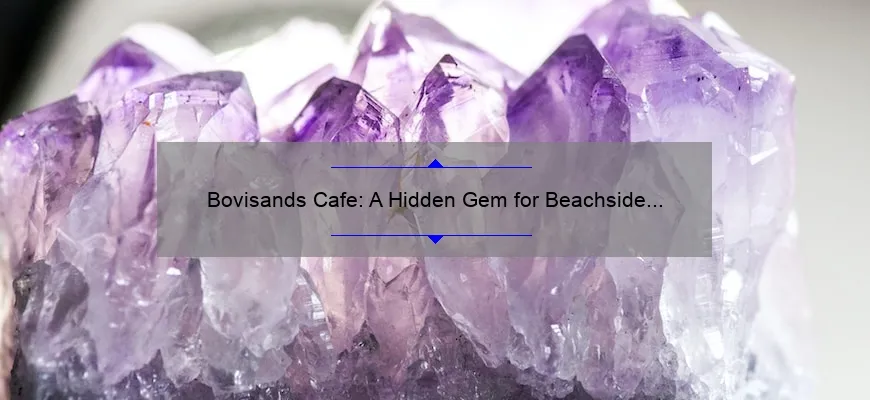- Short answer the Night Cafe Van Gogh: The Night Cafe is a painting created by Vincent van Gogh in 1888. It depicts the interior of a cafe, with vibrant colors and distorted perspective. The painting is now housed at Yale University Art Gallery in New Haven, Connecticut. How Vincent Captured The Essence of Mood & Color in The Night Cafe Van Gogh Vincent Van Gogh, revered as one of the greatest artists of all time, was known for his deeply expressive and emotive paintings. His masterpiece “The Night Cafe” is a classic example of his unparalleled ability to capture and communicate complex moods and emotions through color. The painting depicts the interior of a cafe in Arles, France, with its bright yellow walls and green ceiling. The warm colors evoke a sense of comfort and familiarity, drawing us into the scene with ease. But as we look closer, we begin to feel an unsettling atmosphere; it’s not just any ordinary night in this café. Vincent uses bold and contrasting shades to create an overwhelming feeling of tension which can be felt in every inch of the canvas. He masterfully uses thick brushstrokes to create depth in objects like tables and chairs but then contrasts that texture with flat colors such as those used on some walls. This approach creates an eerie sense that nothing is quite as it seems in the cafe. One striking aspect is the way he plays with light – a characteristic often found in Vincent’s work – generating deep shadows where there should be lighter tones. This approach emphasizes particular areas while obscuring others; thus clearly lending prominence or hiding that which we cannot see. By using different combinations of oranges, reds blues amongst other hues, Vincent creates various moods within The Night Cafe which reflect on love’s unique mixtures; anxiety, sadness rejoicing… It’s almost like walking through different emotional states within a single place – Something so profound it demands attention from viewers; The character sits by himself at one end staring downwards amidst all this swirls giving off trapped emotions punctuated only by occasional expressions on faces occupying nearby surfaces creating brooding ethos ambient lingering aura In conclusion Vincent has captured each element required for true-to-life depiction lending meaning enabling his audience connect with painting itself beyond foreground or visual appeal merely apparent at first glance combination made possible uniquely styles technique usage color particular work. The result is a forceful yet irresistible portrait of a place, of a time and feelings extracted from human emotion. Truly, one cannot contemplate Vincent’s oeuvre without taking note of “The Night Cafe” artwork’s tangible impact on the world’s visual landscape. A Step by Step Breakdown of Vincent’s Technique in Creating The Night Cafe Vincent van Gogh’s The Night Cafe is a masterpiece that has captured the imagination of art enthusiasts worldwide. The piece was created in September 1888 and showcases Vincent’s unique ability to capture and express emotion through his artwork. In this article, we will take a step-by-step breakdown of Vincent’s technique in creating The Night Cafe, exploring his creative process, color choices, and brushwork details. Step 1: Planning the Composition Vincent began by sketching out a preliminary composition for The Night Cafe. He decided to paint a cafe at night, emphasizing on the life that happens inside it rather than relying on external elements like architecture or street scenes. He wanted to showcase people interacting in a space, capturing their emotions as they engage in various activities within the cafe. Step 2: Color Choice Vincent had an appetite for rich, intense color palettes which he often used to capture mood or emotions. For The Night Cafe, he chose colors that highlight the contrast between warm yellow tones and dark blues and greens. This color choice allowed him to create profound depth in his painting. He also made use of complementary colors – green and red for example – to achieve outstanding clarity of light even though night was predominant. Step 3: Applying Layers Once his plan was finalized with sketched outlines; he started applying layers of bold colors using thick brushes generously loaded with paint onto canvas without bothering about overriding visible strokes or transforming planes altogether similar yet unique intensity. The application of various layers helped achieve more significant nuance in different sections of the painting before moving into brush details Step 4: Adding Details With Brushwork Techniques Vincent went about adding detail with strong unbridled directional brushstrokes. He intentionally emphasized sharply contrasting shadows full gutfuls of heavily applied pigments enhancing fine modeling strokes on surfaces allowing every nook & cranny visible while beautifully blending other zones into blurred calmness – accurately capturing the chaos and excitement of a busy night scene. His trademark swirling brushwork resulted in some distortion that gave an almost fairy-tale ambiance, dwelling on the power and poetry of imagination more than direct realism. Step 5: Final Touches To achieve practical harmony, he elevated the color intensity by adding accent highlights that boosted vibrancy while blending sharp edges to create seamless transitions between specific zones; chromatic variations all considered so not to disrupt their consistency. He added mild tone tweaks as closing shop hours approached with final touches before letting it dry for good – no flat texture area remained untransformed. In Conclusion: Vincent’s technique in creating The Night Cafe can be simplified into three elements: Planing his composition, selecting an expressive color palette intentionally applied through multiple layers onto canvas using strong deliberate brush strokes evidently showcasing emotion, finally taking care of every detail resulting in masterpieces like The Night Cafe – characteristically his own: imaginative while challenging reality. His techniques challenged traditional art forms ultimately influencing different art movements that followed- enduring till this day informing modern approaches to painting still. Frequently Asked Questions About The Night Cafe Van Gogh: Answered Vincent Van Gogh is one of history’s greatest artists, and rightly so. His works are renowned all over the world and have inspired generations of artists and art enthusiasts alike. Amongst his many masterpieces is the famous oil painting- The Night Cafe which was completed in 1888. This work of art, like most great works, has found a way to capture people’s imaginations across space and time. However, The Night Cafe by Vincent Van Gogh can be a little perplexing at first glance. There are several identifiable objects within the painting that lead to some questions for those who view it. Here are answers to some frequently asked questions about The Night Cafe: 1) What is The Night Cafe about? The Night Cafe is Van Gogh’s depiction of a small bar he visited in Arles, France where he spent much of his time during his artistic career. Van Gogh often depicted working-class settings such as this cafe or restaurants in his paintings. 2) Why did Vincent Van Gogh paint this picture? Van Gogh wrote to his brother Theo stating that he had wanted to create something with “a terrible passion”. He was hoping that the compelling energy generated by every object in the painting would communicate what he felt when he walked into this particular cafe. 3) Why does everything seem distorted? Van Gogh made use of distorted perspectives and angles along with vivid colors and intense lighting effects to make each object within the painting feel like it’s vibrating with it’s own life force. He called this technique “perspective warp” which allowed him to exaggerate angles in order to heighten the emotional impact of symbols in the composition. 4) Why does the billiard table look so strange? The billiard table appears tilted upward quite steeply towards its right-hand side because Van Gough painted this scene from an uncommon viewpoint – looking downwards towards an object or subject.- causing a partially collapsed feeling. This was done intentionally to create the sense of confusion and instill a need for him to express the frenzied and boisterous vibe of the bar. 5) Why is there an empty chair? The empty seat symbolizes loneliness, and it’s meant to be interpreted that “the only total absence that exists in nature is emptiness.” Completing a painting of this significance which conveys emotion, energy, and human feelings with such intensity left out very little depending on how your own experiences filter into your interpretation of the piece. 6) Is The Night Cafe Van Gogh’s most famous painting? Although one can debate regarding Van Gogh’s other masterpieces like Starry Night or Sunflowers taking higher honors than The Night Cafe, undoubtedly it plays significant importance as Van Gogh proclaimed he intended the viewer equally engaged whether they were sitting down with a drink in front of them or they belonged in an institution. In conclusion, Vincent Van Gogh’s masterpiece will continue to amaze art enthusiasts through generations despite decades having passed since its inception. It is impressive how great artists
- Short answer the Night Cafe Van Gogh:
- How Vincent Captured The Essence of Mood & Color in The Night Cafe Van Gogh
- A Step by Step Breakdown of Vincent’s Technique in Creating The Night Cafe
- Frequently Asked Questions About The Night Cafe Van Gogh: Answered
Short answer the Night Cafe Van Gogh:
The Night Cafe is a painting created by Vincent van Gogh in 1888. It depicts the interior of a cafe, with vibrant colors and distorted perspective. The painting is now housed at Yale University Art Gallery in New Haven, Connecticut.
How Vincent Captured The Essence of Mood & Color in The Night Cafe Van Gogh
Vincent Van Gogh, revered as one of the greatest artists of all time, was known for his deeply expressive and emotive paintings. His masterpiece “The Night Cafe” is a classic example of his unparalleled ability to capture and communicate complex moods and emotions through color.
The painting depicts the interior of a cafe in Arles, France, with its bright yellow walls and green ceiling. The warm colors evoke a sense of comfort and familiarity, drawing us into the scene with ease. But as we look closer, we begin to feel an unsettling atmosphere; it’s not just any ordinary night in this café.
Vincent uses bold and contrasting shades to create an overwhelming feeling of tension which can be felt in every inch of the canvas. He masterfully uses thick brushstrokes to create depth in objects like tables and chairs but then contrasts that texture with flat colors such as those used on some walls. This approach creates an eerie sense that nothing is quite as it seems in the cafe.
One striking aspect is the way he plays with light – a characteristic often found in Vincent’s work – generating deep shadows where there should be lighter tones. This approach emphasizes particular areas while obscuring others; thus clearly lending prominence or hiding that which we cannot see.
By using different combinations of oranges, reds blues amongst other hues, Vincent creates various moods within The Night Cafe which reflect on love’s unique mixtures; anxiety, sadness rejoicing… It’s almost like walking through different emotional states within a single place – Something so profound it demands attention from viewers;
The character sits by himself at one end staring downwards amidst all this swirls giving off trapped emotions punctuated only by occasional expressions on faces occupying nearby surfaces creating brooding ethos ambient lingering aura
In conclusion Vincent has captured each element required for true-to-life depiction lending meaning enabling his audience connect with painting itself beyond foreground or visual appeal merely apparent at first glance combination made possible uniquely styles technique usage color particular work. The result is a forceful yet irresistible portrait of a place, of a time and feelings extracted from human emotion. Truly, one cannot contemplate Vincent’s oeuvre without taking note of “The Night Cafe” artwork’s tangible impact on the world’s visual landscape.
A Step by Step Breakdown of Vincent’s Technique in Creating The Night Cafe
Vincent van Gogh’s The Night Cafe is a masterpiece that has captured the imagination of art enthusiasts worldwide. The piece was created in September 1888 and showcases Vincent’s unique ability to capture and express emotion through his artwork.
In this article, we will take a step-by-step breakdown of Vincent’s technique in creating The Night Cafe, exploring his creative process, color choices, and brushwork details.
Step 1: Planning the Composition
Vincent began by sketching out a preliminary composition for The Night Cafe. He decided to paint a cafe at night, emphasizing on the life that happens inside it rather than relying on external elements like architecture or street scenes. He wanted to showcase people interacting in a space, capturing their emotions as they engage in various activities within the cafe.
Step 2: Color Choice
Vincent had an appetite for rich, intense color palettes which he often used to capture mood or emotions. For The Night Cafe, he chose colors that highlight the contrast between warm yellow tones and dark blues and greens. This color choice allowed him to create profound depth in his painting.
He also made use of complementary colors – green and red for example – to achieve outstanding clarity of light even though night was predominant.
Step 3: Applying Layers
Once his plan was finalized with sketched outlines; he started applying layers of bold colors using thick brushes generously loaded with paint onto canvas without bothering about overriding visible strokes or transforming planes altogether similar yet unique intensity.
The application of various layers helped achieve more significant nuance in different sections of the painting before moving into brush details
Step 4: Adding Details With Brushwork Techniques
Vincent went about adding detail with strong unbridled directional brushstrokes. He intentionally emphasized sharply contrasting shadows full gutfuls of heavily applied pigments enhancing fine modeling strokes on surfaces allowing every nook & cranny visible while beautifully blending other zones into blurred calmness – accurately capturing the chaos and excitement of a busy night scene.
His trademark swirling brushwork resulted in some distortion that gave an almost fairy-tale ambiance, dwelling on the power and poetry of imagination more than direct realism.
Step 5: Final Touches
To achieve practical harmony, he elevated the color intensity by adding accent highlights that boosted vibrancy while blending sharp edges to create seamless transitions between specific zones; chromatic variations all considered so not to disrupt their consistency. He added mild tone tweaks as closing shop hours approached with final touches before letting it dry for good – no flat texture area remained untransformed.
In Conclusion:
Vincent’s technique in creating The Night Cafe can be simplified into three elements: Planing his composition, selecting an expressive color palette intentionally applied through multiple layers onto canvas using strong deliberate brush strokes evidently showcasing emotion, finally taking care of every detail resulting in masterpieces like The Night Cafe – characteristically his own: imaginative while challenging reality. His techniques challenged traditional art forms ultimately influencing different art movements that followed- enduring till this day informing modern approaches to painting still.
Frequently Asked Questions About The Night Cafe Van Gogh: Answered
Vincent Van Gogh is one of history’s greatest artists, and rightly so. His works are renowned all over the world and have inspired generations of artists and art enthusiasts alike. Amongst his many masterpieces is the famous oil painting- The Night Cafe which was completed in 1888. This work of art, like most great works, has found a way to capture people’s imaginations across space and time.
However, The Night Cafe by Vincent Van Gogh can be a little perplexing at first glance. There are several identifiable objects within the painting that lead to some questions for those who view it. Here are answers to some frequently asked questions about The Night Cafe:
1) What is The Night Cafe about?
The Night Cafe is Van Gogh’s depiction of a small bar he visited in Arles, France where he spent much of his time during his artistic career. Van Gogh often depicted working-class settings such as this cafe or restaurants in his paintings.
2) Why did Vincent Van Gogh paint this picture?
Van Gogh wrote to his brother Theo stating that he had wanted to create something with “a terrible passion”. He was hoping that the compelling energy generated by every object in the painting would communicate what he felt when he walked into this particular cafe.
3) Why does everything seem distorted?
Van Gogh made use of distorted perspectives and angles along with vivid colors and intense lighting effects to make each object within the painting feel like it’s vibrating with it’s own life force. He called this technique “perspective warp” which allowed him to exaggerate angles in order to heighten the emotional impact of symbols in the composition.
4) Why does the billiard table look so strange?
The billiard table appears tilted upward quite steeply towards its right-hand side because Van Gough painted this scene from an uncommon viewpoint – looking downwards towards an object or subject.- causing a partially collapsed feeling. This was done intentionally to create the sense of confusion and instill a need for him to express the frenzied and boisterous vibe of the bar.
5) Why is there an empty chair?
The empty seat symbolizes loneliness, and it’s meant to be interpreted that “the only total absence that exists in nature is emptiness.” Completing a painting of this significance which conveys emotion, energy, and human feelings with such intensity left out very little depending on how your own experiences filter into your interpretation of the piece.
6) Is The Night Cafe Van Gogh’s most famous painting?
Although one can debate regarding Van Gogh’s other masterpieces like Starry Night or Sunflowers taking higher honors than The Night Cafe, undoubtedly it plays significant importance as Van Gogh proclaimed he intended the viewer equally engaged whether they were sitting down with a drink in front of them or they belonged in an institution.
In conclusion, Vincent Van Gogh’s masterpiece will continue to amaze art enthusiasts through generations despite decades having passed since its inception. It is impressive how great artists








